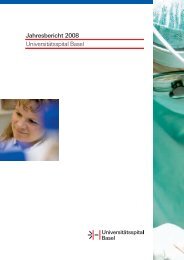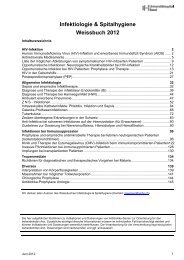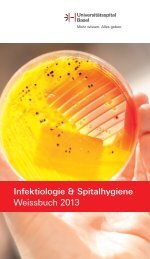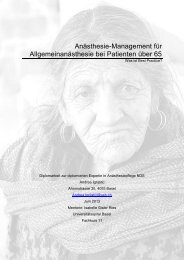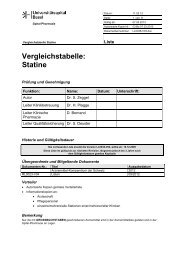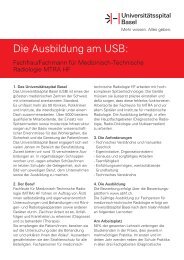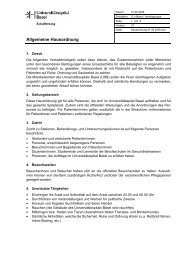Transmucosal Nasal Drug Delivery: Systemic Bioavailability of ...
Transmucosal Nasal Drug Delivery: Systemic Bioavailability of ...
Transmucosal Nasal Drug Delivery: Systemic Bioavailability of ...
Create successful ePaper yourself
Turn your PDF publications into a flip-book with our unique Google optimized e-Paper software.
1. <strong>Nasal</strong> drug delivery<br />
1 <strong>Nasal</strong> drug delivery<br />
1.1 Topical and systemic bioavailability <strong>of</strong> nasally applied drugs<br />
The rate and extend to which an active substance or active moiety is absorbed from the<br />
pharmaceutical preparation and becomes available at the site <strong>of</strong> action, is defined as<br />
bioavailability by the European Agency for the Evaluation <strong>of</strong> Medical Products [EMEA 26. July<br />
2001].<br />
In general, drug administration is characterized by the systemic bioavailability (the rate and<br />
extend the active substance is absorbed into the systemic blood circulation, not taking in<br />
consideration the site <strong>of</strong> action). The reasons are ease <strong>of</strong> blood sampling contrary to the difficulties<br />
to assess the drug concentration directly at the site <strong>of</strong> action (e.g., central nervous system).<br />
Topical drug delivery describes the application <strong>of</strong> a drug directly on the target organ (e.g.,<br />
application <strong>of</strong> glucocorticosteroides for dermatological therapies). To study vehicle effects <strong>of</strong> topical<br />
drug delivery, both the assessment <strong>of</strong> topical bioavailability and systemic bioavailability are<br />
performed. Whereas topical bioavailability allows predicting the therapeutic effect and<br />
systemic bioavailability reflects the systemic exposure meaning the risk for systemic adverse<br />
drug reactions.<br />
The term nasal drug delivery refers to topical and systemic nasal drug delivery. For diseases<br />
<strong>of</strong> the nasal mucosa, such as infectious rhinitis, allergic rhinitis, and nasal polyposis, the topical<br />
nasal administration delivers drug directly to the target organ [Salib and Howarth 2003]. <strong>Nasal</strong><br />
applications <strong>of</strong> topical decongestants or anti-inflammatory drugs are therefore the most popular<br />
topical nasal drug deliveries.<br />
Whereas nasal drug delivery for systemic effect means transmucosal drug delivery, and<br />
provides, for some compounds, direct access to the systemic circulation. <strong>Transmucosal</strong><br />
absorption describes the uptake <strong>of</strong> a compound into the systemic circulation after application on a<br />
mucosa (e.g., nasal, buccal, or rectal mucosa). <strong>Transmucosal</strong> absorption subsumes following<br />
subsequent processes: drug release, penetration (entry into a layer), permeation (transition <strong>of</strong> a<br />
layer), and absorption (uptake into the vascular system).<br />
The common term nasal bioavailability usually refers to the systemic bioavailability after nasal<br />
drug delivery and not to the topical bioavailability in the nasal mucosa.<br />
Katja Suter-Zimmermann Page 11 <strong>of</strong> 188 University <strong>of</strong> Basel, 2008




